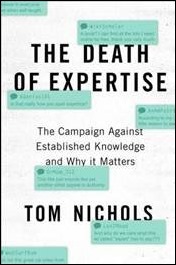EPtalk by Dr. Jayne 1/30/25
The only thing being discussed in the virtual physician lounge today was the Senate confirmation hearing for Robert F. Kennedy, Jr. Colleagues whose specialties are directly related to public health are understandably concerned, and even those who didn’t seem to have thoughts on his positions or beliefs were captivated by the spectacle of the proceedings.
I had a chance to catch up with a friend of mine who spent the first half of her life in the United States but now resides in Wales. She has plenty of experience with both health systems. We’ve had numerous deep conversations over the years about our respective systems and what works and doesn’t work. Apparently, recent goings-on in the US government are quite the hot topics at her local pub, with some referring to it as “the American soap opera.” I can’t wait to hear her ideas about the confirmation hearing when our daytime hours sync up again.
A key part of the testimony today revolved around care for those who reside in rural parts of the US. This PBS News video captures his comments on technology that he recently saw at the Cleveland Clinic, including “an AI nurse that you cannot distinguish from a human being that has diagnosed as good as any doctor.”
I would love to hear from his hosts at that esteemed institution as to what he actually saw and how the health system might be using it. I suspect that there are some elements of the technology that might not have been fully understood, including some level of humans in the loop, which are still necessary for oversight as well as for liability and blame-laying purposes when the AI runs amok. The hearing continues on Thursday, and I look forward to reading the recaps.
Over the last year, I’ve read multiple articles about large, multi-state health systems that are going through EHR consolidation projects. They are often moving away from multiple instances of Epic that may have been customized or configured to meet the needs of an organization that has since been impacted by a merger. These massive migrations to a single gold standard installation can take years. They may involve numerous committees, change control and governance processes, and countless thousands of hours of analyst time.
I read another article about one of these efforts this week and was surprised to see that only one member of the C-suite was featured and it wasn’t a CMIO or CNIO. If nothing else, I would have expected the interviewee to at least give a shout out to the folks behind the scenes who are leading the actual work of such an effort. As we’ve seen a rise in “chief digital officers” and “digital experience” leaders, I’ve seen some CMIOs become a bit sidelined at their own organizations.
Hopefully, this was just an oversight and plenty of informaticists are involved in getting the decisions made and the workflows modified. Word to the wise for those being interviewed: it’s never a bad idea to give credit to other members of your team for helping you get to the place where people might want to read about your efforts.
I was talking with some informaticists this week about the role of real-world evidence in the current care environment. We’re constantly being peppered with newsy articles from various vendors about their findings using these tools. A recent piece reviewed the correlation between a particular vaccine and the reduced likelihood of dementia. Although its related headline was attention grabbing, it did nothing to explain why there might be an association or what the meaning of what such a correlation might be. Maybe those who get the vaccine fall into a group of people with generally healthy behaviors compared to those who might not get the vaccine because they don’t have a primary care home or follow other preventive advice.
There’s certainly more to this than a simple association, and when I see articles like this, it sort of feels like they’re drawing conclusions for the sake of drawing conclusions rather than really trying to understand how two clinical concepts might be related and how the information might be used to drive outcomes for real world patients.
Mr. H and I have often shared our thoughts about the industry buzzwords that make us batty. As a primary care physician, “wellness” has become one of those that annoys me. We used the wellness concept 20 years ago to describe preventive visits – such as well child and well woman – in an attempt to be more descriptive than “going in for a check-up” and to emphasize the value of preventive care and the fact that it was a distinct type of service. Since then, so many entities have jumped on the wellness bandwagon, often for the purpose of generating revenue.
Wellness, as opposed to a well visit, is a nebulous term that doesn’t necessarily refer to any concrete medical concepts. It is often used as a euphemism for “things that will make you feel good but that don’t necessarily have strong medical evidence.” It reminds me of when vitamin and supplement manufacturers use the term “immune support” or “supports gut health” on their products because they don’t have the data to show that a product treats any particular condition.
Wellness is also used to sell products that have dubious and possibly harmful effects (check out Goop if you’re not sure where I’m going here). The word has been overused by for-profit entities and is used often in telehealth, taking away from more serious kinds of care that can be delivered within that framework. Although I adore Kohler plumbing products (I’m still trying to figure out how to install the mythical, magical bathtub that debuted at CES 2021 into my hideous 1980s bathroom), I give them a C-minus on their new ad campaign. The wellness theme grates on me, as does the tagline “immerse yourself in transformation.”
What do you think about wellness? Is it a term that’s past its prime, or are we just at the beginning of a wellness journey? Leave a comment or email me.

Email Dr. Jayne.











I dont think anything will change until Dr Jayne and others take my approach of naming names, including how much…